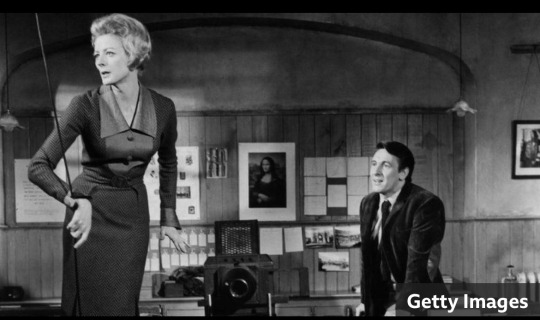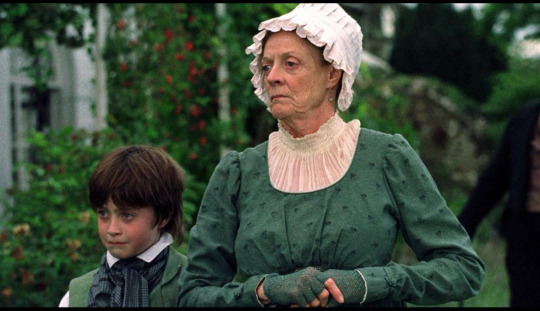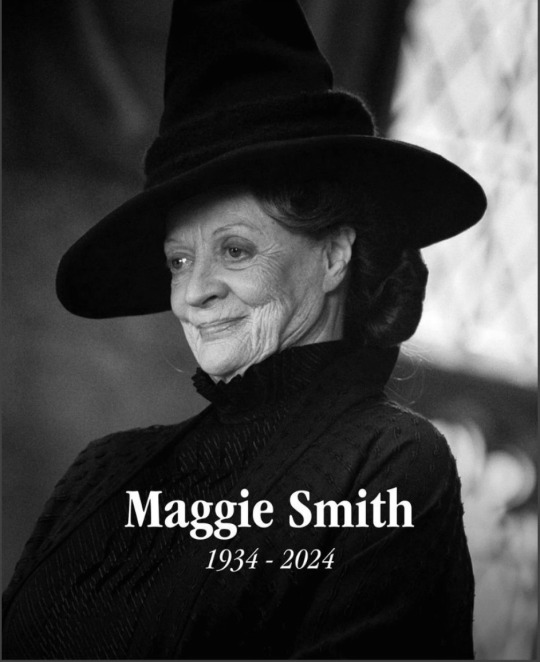#tea with mussolini
Explore tagged Tumblr posts
Text

Was saddened to hear of the passing of Maggie Smith today. She was an amazing actor who left us with a broad body of work.
#maggie smith#a room with a view#death on the nile#clash of the titans#murder by death#tea with mussolini#evil under the sun
12 notes
·
View notes
Text
Rest in Peace to the incomparable Dame Maggie Smith B. 28 December 1934 D. 27 September 2024 #damemaggiesmith #ripmaggiesmith #filmicon #theatreicon #tvicon #downtonabbey #harrypotter #professormcgonagall #theprimeofmissjeanbrodie #travelswithmyaunt #othello #gosfordpark #theladyinthevan #divinesecretsoftheyayasisterhood #myhouseinumbria #ladiesinlavender #thebestexoticmarigoldhotel #aroomwithaview #thesecretgarden #washingtonsquare #quartet #aprivatefunction #loveandpainandthewholedamnthing #deathonthenile #evilunderthesun #sisteract #thefirstwivesclub #teawithmussolini #thevips #youngcassidy








#dame maggie smith#rip Maggie smith#film icon#theatre icon#tv icons#downton abbey#professor mcgonagall#the prime of miss jean Brodie#travels with my aunt#othello#the lady in the van#the best exotic marigold hotel#quartet#a private function#the lonely passion of Judith Hearne#a room with a view#love and pain and the whole damn thing#death on the Nile#evil under the sun#young Cassidy#the vips#the pumpkin eater#sister act#the first wives club#Washington Square#the secret garden#hook#my house in Umbria#ladies in lavender#tea with Mussolini
8 notes
·
View notes
Text










Cher as Elsa Morganthal in Tea with Mussolini trying to make Luca (Baird Wallace) stop being mad at her with a butt-in from Lily Tomlin as Georgie Rockwell and Paul Chequer as Wilfred 'Lucy' Random
The last gif: me too, dude
7 notes
·
View notes
Text

Tea with Mussolini, 1999 New York Premiere with Dame Joan Plowright Photographer: Dan D'Errico
#judi daily!#tea with mussolini#judi dench#dame judi dench#photogrpaher: dan D'errico#with Joan Plowright
7 notes
·
View notes
Photo

1 note
·
View note
Text

DAME JOAN PLOWRIGHT,BARONESS OLIVIER (1929-Died January 16th 2025,at 96).English actress whose career spanned over six decades. She received several accolades including two Golden Globe Awards, an Olivier Award, and a Tony Award as well as nominations for an Academy Award, two BAFTA Awards, and a Primetime Emmy Award. She was made a Dame by Queen Elizabeth II in 2004.
Plowright studied at the Old Vic Theatre School before acting onstage at the Royal National Theatre where she met her husband Sir Laurence Olivier. She acted opposite him in the John Osborne play The Entertainer on the West End in 1957 and on Broadway in 1958. She earned the Tony Award for Best Actress in a Play for her A Taste of Honey (1961). She won the Laurence Olivier Award for Filumena (1978).
She made her film debut in an uncredited role in Moby Dick (1956). She later won the Golden Globe Award for Best Supporting Actress – Motion Picture and was nominated for the Academy Award for Best Supporting Actress for Enchanted April (1991). She was BAFTA-nominated for her roles in The Entertainer (1960) and Equus (1977). She also acted in the films Uncle Vanya (1963), Three Sisters (1970), Avalon (1990), Dennis the Menace (1993), 101 Dalmatians (1996), Jane Eyre (1996), Tea with Mussolini (1999), Bringing Down the House (2003), and Mrs. Palfrey at the Claremont (2005). She also voiced roles for the children's films Dinosaur (2000) and Curious George (2006).
On television she was nominated for the Primetime Emmy Award for Outstanding Supporting Actress in a Limited Series or Movie and won the Golden Globe Award for Best Supporting Actor – Series, Miniseries or Television Film for her role in the HBO television film Stalin (1992). She retired from acting due to macular degeneration in 2014. She made her final filmed appearance in the documentary Nothing Like a Dame (2018).Joan Plowright - Wikipedia
#Dame Joan Plowright#British Actresses#Actresses#Acting Legends#English Actresses#Laurence Olivier#The Entertainer#Tea With Mussolini#Notable Deaths in January 2025#Notable Deaths in 2025
1 note
·
View note
Text
The Zeffirelli Centennial
Born 100 years ago today, Italian designer, director and politician Franco Zeffirelli (1923-2019). When Zeffirelli passed, only four years ago, it dawned on me that his hit 1968 screen adaptation of Romeo and Juliet was my first introduction to Shakespeare. I think this is true of a lot of people. We even had the soundtrack album to that movie in our house — the theme song became a #1 in the…

View On WordPress
#abuse#director#Endless Love#Franco Zeffirelli#Hamlet#Italian#Jesus of Nazareth#movie#Romero and Juliet#Tea with Mussolini
1 note
·
View note
Text
Acting legend Dame Joan Plowright dies at 95

Joan Plowright was made a dame in 2004
Dame Joan Plowright, one of Britain's most celebrated stage and screen stars and the widow of Sir Laurence Olivier, has died at the age of 95.
Her career spanned 60 years and included an Oscar nomination for the 1991 film Enchanted April.
She married Olivier in 1961 after starring opposite him as his daughter in The Entertainer, and became a leading member of the National Theatre, which he set up.
In a statement, her family said they were "so proud of all Joan did and who she was as a loving and deeply inclusive human being".
Obituary: Acting star whose first love was theatre

Laurence Olivier and Joan Plowright first appeared together in The Entertainer in 1957
'Grit and courage'
Her family said: "It is with great sadness that the family of Dame Joan Plowright, the Lady Olivier, inform you that she passed away peacefully on January 16 2025 surrounded by her family at Denville Hall aged 95.
"She enjoyed a long and illustrious career across theatre, film and TV over seven decades until blindness made her retire.
"She cherished her last 10 years in Sussex with constant visits from friends and family, filled with much laughter and fond memories."
They added: "She survived her many challenges with Plowright grit and courageous determination to make the best of them, and that she certainly did.
"Rest in peace, Joan..."
She had been retired for a decade, having lost her eyesight and been registered blind.

Born in Scunthorpe, Plowright became a leading lady in London's West End in the 1950s, and first appeared opposite Olivier in John Osborne's The Entertainer at the Royal Court in 1957.
He was still married to Gone With The Wind star Vivien Leigh at the time, and Plowright was married to her first husband Roger Gage.
Plowright and Olivier fell in love, and their acting partnership earned them both Bafta nominations for the film version of The Entertainer, which came out in 1960.
That year, Plowright also made her breakthrough in the US in A Taste of Honey on Broadway, winning a Tony Award for her performance.
Her other notable plays included George Bernard Shaw's Saint Joan, about Joan of Arc, in 1963, which for which she was named best actress at the Evening Standard Theatre Awards.
And she won a Society of West End Theatre Award - later renamed the Olivier Awards after her husband - in 1978 for Filumena.
She received another Bafta nomination that same year for her performance in the film version of Equus alongside Richard Burton.
In Enchanted April, her role as the elegant but peevish Mrs Fisher earned her a Golden Globe as well as a nomination for the Oscar for best supporting actress in 1993.
Nothing Like A Dame
Dame Joan was one of a generation of great acting dames, and appeared opposite Dame Judi Dench and Dame Maggie Smith in the 1999 film Tea with Mussolini.
More recently, she was famously seen reminiscing and enjoying repartee with Dame Judi, Dame Maggie and Dame Eileen Atkins in the 2018 BBC documentary Nothing Like A Dame.
In a clip from the show, which went viral online, a slightly disgruntled Dame Maggie is seen telling Dame Judi she was "always asked first" when acting roles were offered.
The exchange was initially missed by Dame Joan because one of her hearing aids had fallen out, but she then joined in the joke, also recounting a similar story. She was then offered a spare hearing aid by the late Dame Maggie, who died in September 2024.
West End theatres will dim their lights for two minutes in tribute to Dame Joan on Tuesday.
UK Theatre and Society Of London Theatre co-chief executive Hannah Essex said: "Dame Joan Plowright was an iconic and deeply respected figure in the world of theatre, leaving an indelible mark on the industry she shaped with her talent and dedication.
"We are honoured to contribute to the celebration of her extraordinary career and extend our heartfelt condolences to her family and loved ones."
19 notes
·
View notes
Text
Maggie Smith, Oscar-winning star of stage and screen, dies aged 89 💔
Dame Maggie Smith, the masterful, scene-stealing actor who won an Oscar for the 1969 film “The Prime of Miss Jean Brodie” and gained new fans in the 21st century as the dowager Countess of Grantham in “ Downton Abbey” and Professor Minerva McGonagall in the Harry Potter films, died early Friday in a London hospital.
Margaret Natalie Smith was born in Ilford, on the eastern edge of London, on 28th December 1934. Her father was assigned in 1939 to wartime duty in Oxford, where her theatre studies at the Oxford Playhouse School led to a busy apprenticeship.
One of Smith’s most iconic early roles was as Desdemona in Shakespeare's Othello. Laurence Olivier spotted her talent, invited her to be part of his original National Theatre company and cast her as his co-star in a 1965 film adaptation of “Othello.”

Laurence Olivier offered Smith the part opposite his Othello
Smith was frequently rated the preeminent British female performer of a generation with two Oscars, a clutch of Academy Award nominations and a shelf full of acting trophies.
The role that brought Smith international fame came in 1969 when she played the determined non-conformist teacher in the title role of The Prime of Miss Jean Brodie.

The role of Jean Brodie, alongside future husband Robert Stephens, won her an Oscar
The film was adapted from the 1961 novel by Muriel Spark, set in 1930s Edinburgh, and the character was based on the author's inspirational teacher.
"Jean Brodie," in which she played a dangerously charismatic Edinburgh schoolteacher, brought her the Academy Award for best actress, and the British Academy Film Award (BAFTA) as well.
Maggie Smith won critical acclaim for her role as Betsey Trotwood in a BBC adaptation of David Copperfield at the turn of the century. The part also brought her Bafta and Emmy nominations.

She appeared with a young Daniel Radcliffe in David Copperfield.
She starred alongside a young Daniel Radcliffe, who she would later act with again in the Harry Potter films.
In 2001, she took on the role of Professor Minerva McGonagall in Harry Potter and the Philosopher's Stone.

Dame Magie Smith is known to millions as Professor Minerva McGonagall from Harry Potter. Dame Maggie was reportedly the only actor JK Rowling specifically asked to star in the films.
In 2007, while working on Harry Potter and The Half-Blood Prince, Dame Maggie was diagnosed with breast cancer but continued filming. She was given the all-clear after two years of treatment.
From 2010, she was the acid-tongued Violet Crawley, Dowager Countess of Grantham, in the hit TV period drama “ Downton Abbey,” a role that won her legions of fans, three Emmy Awards, a Golden Globe and a host of other awards nominations.

Downton Abbey - Violet Crawley - The period ITV drama ran from 2001 to 2015, followed by two films
One of Smith's most famous later roles was as a homeless woman in The Lady In The Van, as Miss Shepherd, a redoubtable woman who lived for years in her vehicle on Bennett’s London driveway.

Smith first played Miss Shepherd on stage in 1999 and earned an Olivier nomination for Best Actress
Smith added a supporting actress Oscar for “California Suite” in 1978, Golden Globes for “California Suite” and “A Room with a View,” and BAFTAs for lead actress in “A Private Function” in 1984, “A Room with a View” in 1986, and “The Lonely Passion of Judith Hearne” in 1988.
She also received Academy Award nominations as a supporting actress in “Othello,” “Travels with My Aunt,” “Room with a View” and “Gosford Park,” and a BAFTA award for supporting actress in “Tea with Mussolini.” On stage, she won a Tony in 1990 for “Lettice and Lovage.”
She was one of a select group of actors to win the treble of big US awards, with two Oscars, four Emmys and a Tony - as well as seven Baftas and an honorary Olivier Award in the UK 🇬🇧
Maggie Smith was made a Dame Commander of the British Empire 🏅 the equivalent of a knight, in 1990.

She will never be forgotten & her characters will continue on, for future generations to love 💫 🎭
RIP Maggie Smith 1934-2024 🥀 🖤
#DameMaggieSmith #Oscar-winning #star #film #ThePrimeofMissJeanBrodie #DowntonAbbey #CountessofGrantham #VioletCrawley #BAFTA #HarryPotter #ProfessorMinervaMcGonagall TheLadyInTheVan #MissShepherd #GoldenGlobe #Gettyimages
Posted 27th September 2024
13 notes
·
View notes
Text
It would be so funny if i were to create a group for far-right LGBT youth, and our beliefs are:
-Classical Fascism: did you know that Giovanni (father of fascism alongside Mussolini) was disgusted by racism? So are we :3
-Eco-Fascism: the environment is suffering y'all.
-Strasserism: the left-wing of nazism which believed Germany should have started a war against the USA, allied with Russia, socialized the means of production and focused entirely on the wellbeing of the proletariat, my cup of nazi tea :3
-National Anarchism: anti-imperialism and anti-capitalism! Turns out neoliberal globalization pissed off some puritanical people who don't like the state, so they ended up with pseudo-anarchist communes with a whole lot of racism :v
-Julius Evola: this goofy ahh fascist bro believed in the supremacy of the individual over the dogma of christianity and such, yet that while alone is weak, many together are strong!
-Friedrich Nietzsche: whilst inspiring so much nazi shit, this guy was very inspiring to differently-abled people such as myself :3 his concept of a self-determining individual who is bettered by rising above their unique challenges, although he didn't love women 3:
-Homofascism: :3 love it
Our whole purpose is honestly, not fascist at all, it's just religious socialism with extra steps! But hey, it will probably attract some sexy nazis that will feel horrified when they see our degeneracy on full display whilst we study Mein Kampf :3 love y'all, be safe followers :3
#fascism#nazism#funny#:3#lgbt#lgbtq#lgbt pride#far right#germany#usa#russia#socialism#communism#ecology#feminism#anti racism#anti imperialism#anarchism#catgirl#transfem#anti capitalism#progressivism#tw fascism#tw nazis#tw politics#political comedy#UwU quirky#Mussolini#Julius Evola#friedrich nietzsche
8 notes
·
View notes
Text











Cher as Elsa Morganthal and Dame Maggie Smith as Lady Hester Random in Tea with Mussolini
8 notes
·
View notes
Text

Tea with Mussolini, 1999 New York Premiere Photographer: Dan D'Errico
5 notes
·
View notes
Photo

1 note
·
View note
Text



DAME MAGGIE SMITH (1934-Died September 27th 2024,at 89).British actress. Regardewd as a legend of theatre,film and tv,she was known for her wit in comedic roles, she had an extensive career on stage and screen over seven decades and was one of Britain's most recognisable and prolific actresses. She received numerous accolades including two Academy Awards, five BAFTA Awards, four Emmy Awards, three Golden Globe Awards, and a Tony Award as well as nominations for six Laurence Olivier Awards. Smith was one of the few performers to earn the Triple Crown of Acting. She won the Academy Awards for Best Actress for The Prime of Miss Jean Brodie (1969),and Best Supporting Actress for California Suite (1978). She will be best known to fans around the world for her role as Dowager Countess Violet Crawley,in ther hit British period tv series,Downton Abbey,andd especially to harry Potter fans,for playing Professor Minerva McGonagall,in the all of the Harry Potter franchise films. her numerous other films include Gosford Park,Tea With Mussolini,Sister Act and it's sequal,and The Lady in the Van.One of her children,son Toby Stephens,is also an actor,known for his role in the tv pirate series Black Sails.Maggie Smith - Wikipedia
#Dame Maggie Smith#British Actresses#Actresses#English Actresses#Professor McGonagall#Harry potter#Downton Abbey#The Prime of Miss Jean Brodie#Acting Legends#Notable Deaths in September 2024#Notable Deaths in 2024
21 notes
·
View notes
Text






thanks for the ping @geniusflesh :D
my top 6-9 watches for 2024:
Tea with Mussolini (1999) - Directed by Franco Zeffirelli
A Quiet Place: Day One (2024) - Directed by Michael Sarnoski
Nope (2022) - Directed by Joran Peele
Jaws (1975) - Directed by Steven Spielberg
Carol (2015) - Directed by Todd Haynes
Alien (1979) - Directed by Ridley Scott
I dont have many people to tag 🤷
@creepycrawwly @turtlefan15
#alien is my top favorite of this year though no doubt. i got to see it in theaters for my birthday#“how have you not seen jaws until now” idk im sorry im young LOL
2 notes
·
View notes
